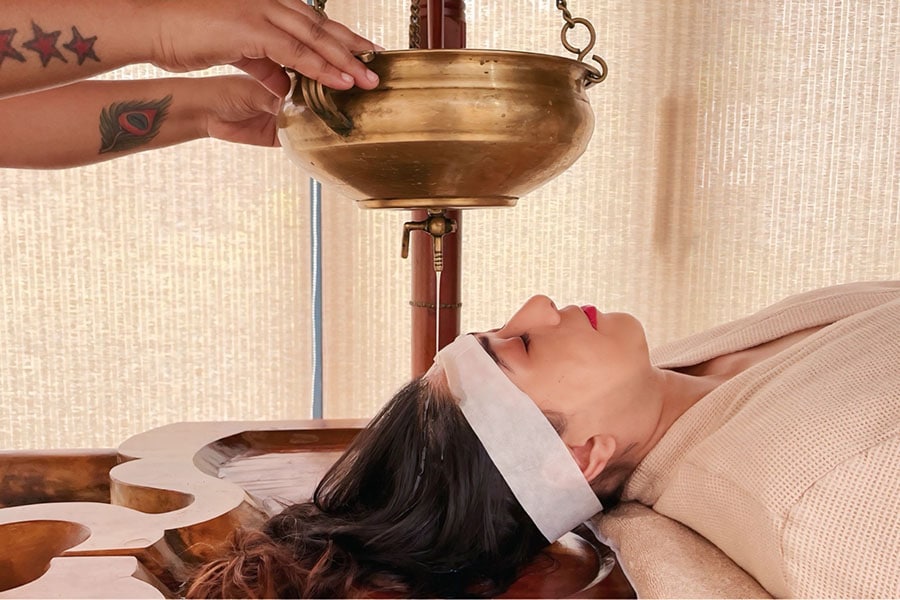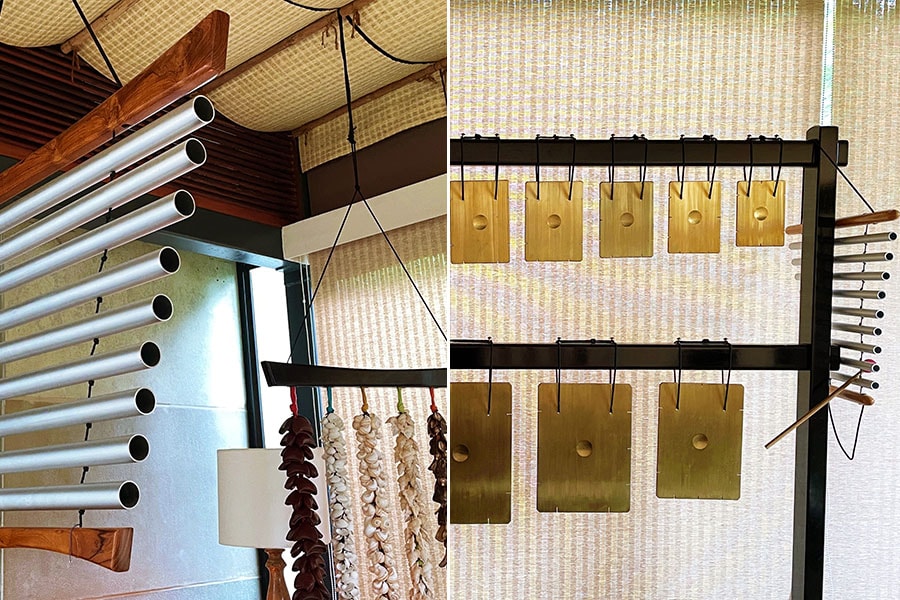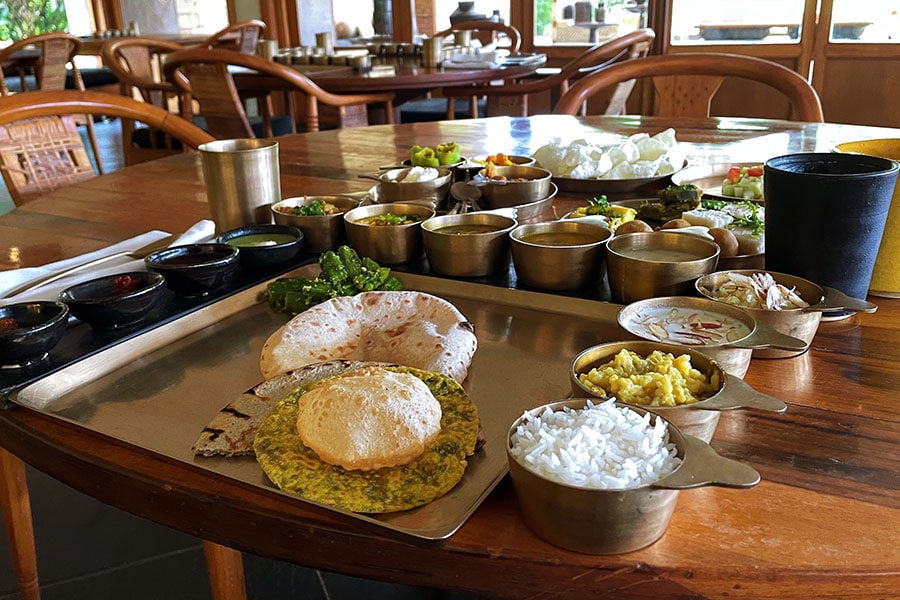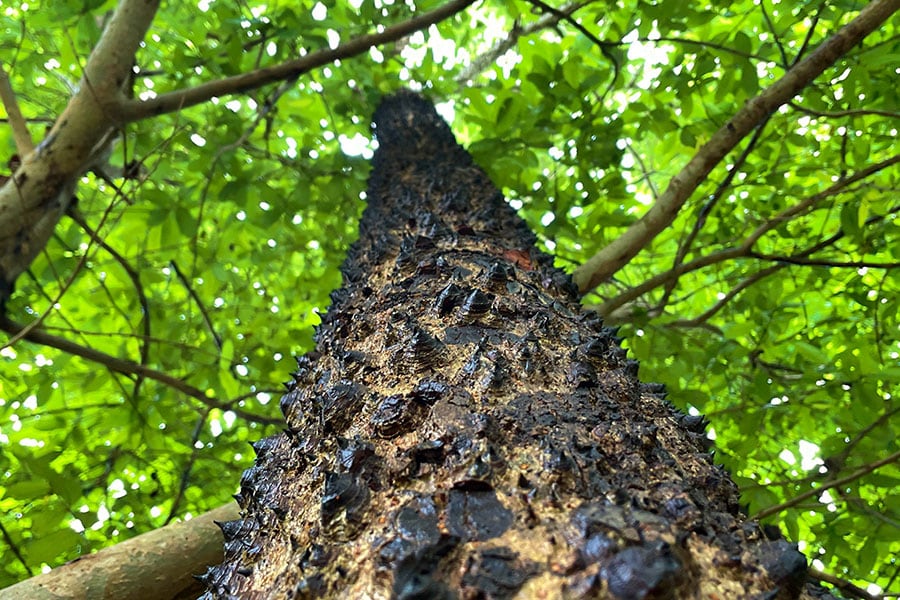
A holistic safari to Sasan Gir
In the woods at Sasan Gir, in the middle of a mango orchard, sound and Lama Fera form the basis of healing therapies that energise and restore
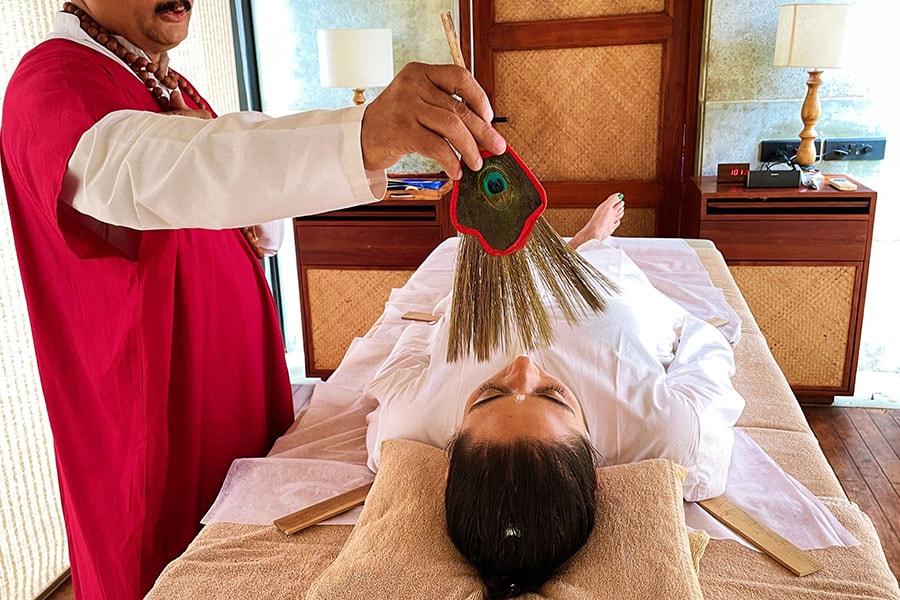 Balachandra facilitating Lama Fera, an ancient Buddhist healing therapy that he spent over a decade mastering under the guidance of Lama Krishna in Nepal.
Balachandra facilitating Lama Fera, an ancient Buddhist healing therapy that he spent over a decade mastering under the guidance of Lama Krishna in Nepal.
With the monsoon tapping a soft cadence, my four-hour odyssey from Rajkot to Gir was a pursuit of the siren song of Sonorium. This rare, ancient sound practice, offered by Svaram, a centre for the craft, art and science of sound, in select locations—Auroville, Gir, and now Goa—heightens synaesthetic perception, allowing one to feel the immediate impact of sound vibrations on the body. I'm returning to Gir during the monsoon, but memories of my February visit—sighting Asiatic lions and connecting with the Siddi tribe—still linger. Six months later, the lush landscape of Gir mirrors my own inner quest for restoration. Regardless of the season, the long drive offers a chance for forest bathing, or ‘Shinrin-Yoku’, the Japanese practice of immersing in the forest. In Gir, this connection is seamless, especially when staying smack in the middle of an eight-acre mango orchard.
“As India's urban landscapes expand and mental health concerns escalate, more people are discovering the profound connection between wellness and nature. From biophilic design transforming spaces into serene sanctuaries to gardening/organic farming emerging as a preferred therapeutic practice, the ‘green wave’ is sweeping across the country, promising a holistic approach to well-being as refreshing as restorative,” says Nilay Saran, business director of 1000 Island Hotels & Resorts, which manages Woods at Sasan in Gir. Chandan SG, general manager at Woods At Sasan, adds, “We tailor holistic programmes, while combining traditional Indian practices like ayurveda with modern wellness techniques, guiding guests toward lasting wellness in a forest setting.”
Each of the 38 villas at Woods is a private retreat with stunning nature views, optimising sunlight and energy efficiency, reducing consumption by 26 percent. They’ve cut plastic use by 90 percent and employ over 40 percent of local staff. At Woods, Som Wellness is a dedicated space offering a range of experiences, from nature yoga to rejuvenating therapies. ‘Som’ isn’t just a collection of spa cabins—it embodies the Vanaushadhi philosophy, harnessing the therapeutic properties of hand-planted-and-plucked botanicals like sandalwood, camphor, hibiscus, and holy basil. These herbs grown on-site at Som Wellness are aromatised into facials and ayurvedic therapies.
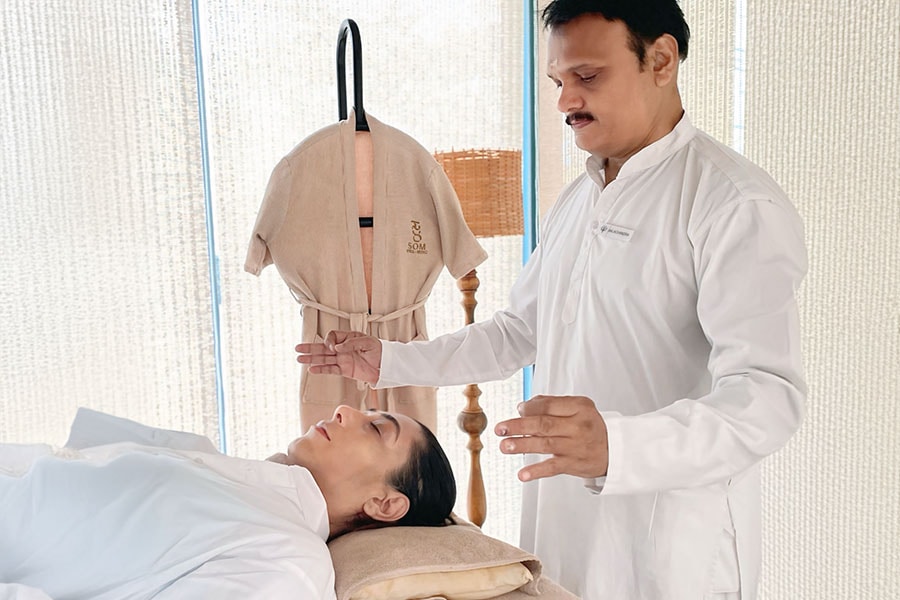 Balachandra claims to be the only person in the world who facilitates ‘Mudra Kayakalpa’ therapy, making Som Wellness in Gir the exclusive destination for this treatment.
Balachandra claims to be the only person in the world who facilitates ‘Mudra Kayakalpa’ therapy, making Som Wellness in Gir the exclusive destination for this treatment.
My visit, however, focused on exploring the therapeutic potential of sound at the ‘Sonorium’. Sound meditation focuses on concentrated awareness. A Sonorium, developed by Svaram Musical Instruments & Research in Auroville, creates an energy field to support meditation integration and is now available at Som Wellness in Gir. Certified healer Balachandran Kuzhikkattipurath (57), who has been with Woods for seven years, guides me into a sound chamber equipped with tubular bells, plate gongs, chime whale, sound stone, seashells including coconut shells and Areli seeds, Himalayan bowl, resonator tubes, and a xylophone. A Himalayan salt lamp casts a warm glow as I recline on ‘Nidraantar’, an acoustic bed with 50 steel cords. The sound healing begins with Om chanting, for grounding.



